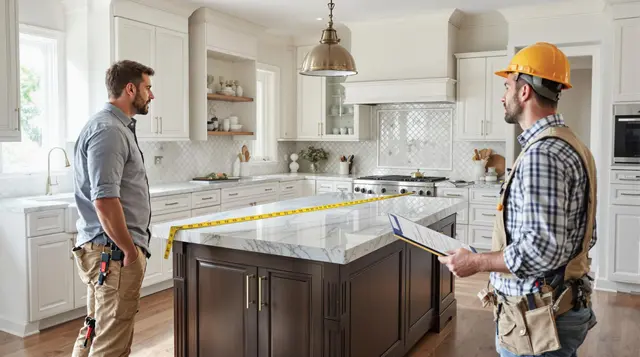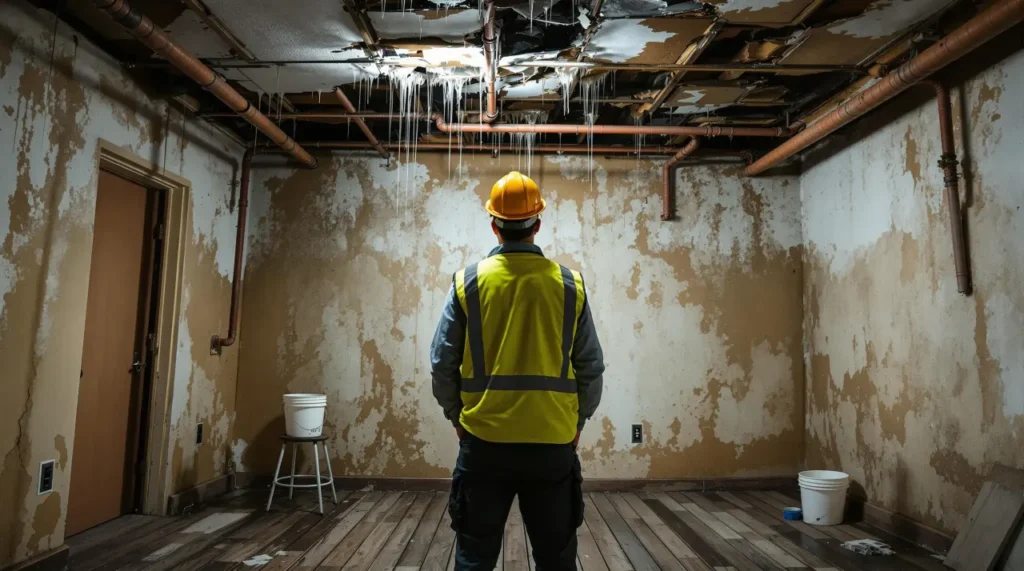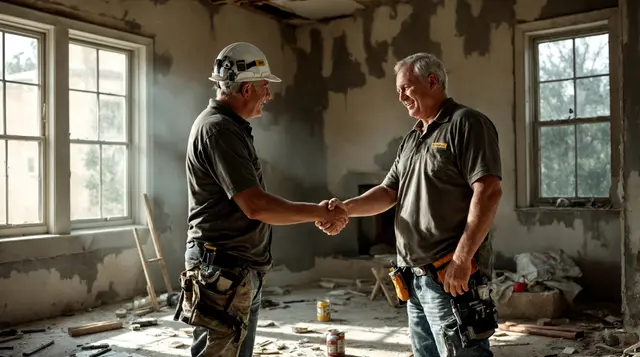
Renovating a home is often romanticized as a path to equity, style, and pride. But for many, it becomes a financial rollercoaster. Consider Sarah, a homeowner who poured $150,000 into a “dream kitchen” with marble countertops and high-end appliances—only to see her home’s value stagnate when she listed it two years later. Why? Because her upgrades clashed with her neighborhood’s modest, ranch-style homes.
This story isn’t rare. Renovations, while promising transformation, often come with hidden costs, scams, and emotional traps. In this article, we’ll dissect the risks of overspending, contractor pitfalls, and low-return projects, offering actionable steps to turn your renovation into a smart investment—not a gamble.
1. Financial Pitfalls: Where Homeowners Overspend

One of the biggest renovation myths is that “spending more equals better results.” In reality, overspending on low-ROI projects is a silent killer of home equity. For example, a luxury master suite addition might cost $300,000 but recoup only 50% of its value at resale. Meanwhile, a minor kitchen remodel (new cabinets, appliances) typically returns 75–80%. Why the discrepancy? Buyers prioritize functionality over extravagance. A $15,000 granite countertop upgrade might wow you, but it won’t justify a $200,000 price hike to most buyers.

Unexpected Costs are another budget-buster. Homeowners often underestimate “hidden expenses” like permit fees ($500–$2,000), structural repairs (e.g., $10,000 for foundation work), or design changes mid-project. A 2023 survey found that 68% of renovations exceed budgets, with the average overspend hitting $12,000. To avoid this, allocate 15–20% of your budget as a contingency fund. For a $100,000 project, that’s $20,000 saved for surprises.
Pro Tip: Before breaking ground, hire a pre-renovation inspector ($300–$500) to uncover issues like outdated wiring or roof leaks. This small investment can save tens of thousands in surprises later.
2. Contractor Scams and Hiring Mistakes

The renovation industry is rife with horror stories: contractors who vanish after taking a deposit, shoddy work that requires costly repairs, or unlicensed workers who botch jobs. One couple in Texas hired a “handyman” who demanded $15,000 upfront for a bathroom remodel. He left after two days, having stripped the tiles but never replacing them. The couple spent another $20,000 to fix the mess.
Red Flags to Watch For:
- Upfront Payments: Reputable contractors ask for 10–30% upfront, not 100%.
- Vague Contracts: A contract lacking timelines, payment schedules, or dispute clauses is a recipe for disaster.
- No Insurance: Uninsured workers can sue you if injured on your property.
How to Vet Contractors:
- Ask for References: Call past clients and visit completed projects. If a contractor hesitates, walk away.
- Check Licenses: Use your state’s licensing board website (e.g., California’s CSLB) to verify credentials.
- Use Platforms Like Sweeten: These services vet contractors and mediate disputes.
Personal Take: I once hired a contractor who seemed “too good to be true” (low bid, fast timeline). He cut corners, leaving my floors uneven. Trust your gut—if a deal feels rushed or too cheap, it probably is.
3. The ROI Mirage: Why Some Renovations Backfire

Many homeowners assume renovations automatically boost resale value. But the data tells a different story. A 2024 Cost vs. Value Report found that only 3% of projects recoup 100% of costs. Here’s why:
Overcustomization: A $50,000 home theater might thrill you, but most buyers see it as a niche expense. They’d rather have a functional living room.
Neighborhood Mismatch: Installing a $200,000 pool in a $300,000 home in a working-class suburb alienates buyers and lowers your home’s appeal.
Trendy vs. Timeless: While open-concept kitchens are trendy, they may fall out of favor. Buyers prioritize layouts that suit families, not fleeting trends.
High-ROI Projects to Prioritize:
- Exterior Improvements: A new roof ($10,000) returns 65–80%.
- Bathroom Remodels: A midrange update ($20,000) recovers 60–65%.
- Energy Efficiency: Solar panels or insulation upgrades attract eco-conscious buyers and lower utility bills.
Pro Tip: Before renovating, consult a local real estate agent. They can advise whether your upgrades align with neighborhood demand. For example, in California, solar panels boost resale value by 4.1%, but in the Midwest, buyers prioritize finished basements.
4. Psychological Traps: The “Sunk Cost Fallacy”

The sunk cost fallacy is a psychological pitfall where homeowners justify escalating spending on a failing project because they’ve already invested time or money. For example, a couple who spent $50,000 on a poorly planned addition might throw another $30,000 at it, hoping to “break even.” Yet, the more they spend, the deeper the hole becomes.
Emotional Spending: This often manifests in overcustomization. A homeowner might add a pool to “boost resale,” ignoring that only 7% of buyers prioritize pools, per a Realtor.com survey. The emotional attachment to the project blinds them to its financial impracticality.
Solution:
- Set a Hard Budget: “Treat your renovation like a business investment, not a passion project,” advises financial planner Maria Chen. “Once you hit your limit, stop—no exceptions.”
- Consult a Neutral Third Party: Real estate agent David Kim recommends involving an agent early. “They can tell you if your ‘dream feature’ will alienate buyers or inflate costs unnecessarily.”
5. Case Studies: Lessons from Renovation Disasters

Story 1: The Uninsured Contractor
A couple in Florida hired an uninsured contractor to renovate their bathroom. When a pipe burst during demolition, flooding their home, the contractor lacked liability insurance. The couple faced $50,000 in repairs and legal fees. “Always verify insurance and licenses,” warns contractor John Lee. “A $500 savings on a bid isn’t worth a $50,000 nightmare.”
Story 2: The DIY Plumbing Debacle
A DIY enthusiast in Texas attempted to reroute plumbing for a new bathroom. Without a permit, he missed a critical inspection, causing a pipe to burst and flood his home. The $10,000 repair cost exceeded the $3,000 he saved on labor. “DIY can work for cosmetic upgrades, but structural or plumbing work requires permits and pros,” says plumber Emily Nguyen.
Key Takeaways:
- Insurance: Ensure contractors carry liability and worker’s comp.
- Permits: Skipping permits risks fines, failed inspections, and safety hazards.
- Professional Help: “A $300 plumber’s consultation can save you $10,000 in repairs,” notes Nguyen.
6. Planning for Success: A Step-by-Step Guide

Budgeting:
Use tools like HomeAdvisor’s cost estimator or Excel spreadsheets to track expenses. Financial planner Raj Patel suggests allocating 15–20% of your budget to contingencies. “Unexpected issues are inevitable—plan for them upfront.”
Prioritization:
Tackle critical repairs first (e.g., leaky roofs, faulty wiring) before cosmetic upgrades. Contractor Alex Chen advises, “A roof leak can cause $10,000 in mold damage if ignored. Smart tech gadgets can wait.”
Timeline Management:
Factor in delays:
- Supply Chain Issues: Order materials 3–6 months ahead.
- Weather: Schedule outdoor projects in dry seasons.
- Buffer Time: Add 20% to your timeline for unexpected delays.
7. Legal and Insurance Safeguards
Contracts:
Include clauses for:
Delays: “If the contractor is late, they should reduce fees or provide compensation,” says attorney Lisa Park.
Change Orders: Require written approval for scope changes.
Dispute Resolution: Mediation or arbitration clauses can prevent costly lawsuits.
Insurance:
Liability Insurance: Covers property damage or injuries.
Worker’s Comp: Protects you if a worker is injured.
Permits: Ensure compliance with local codes to avoid fines.
Expert Tip: “A detailed contract is your best defense,” advises Park. “Without it, you’re gambling with your home’s equity.”





